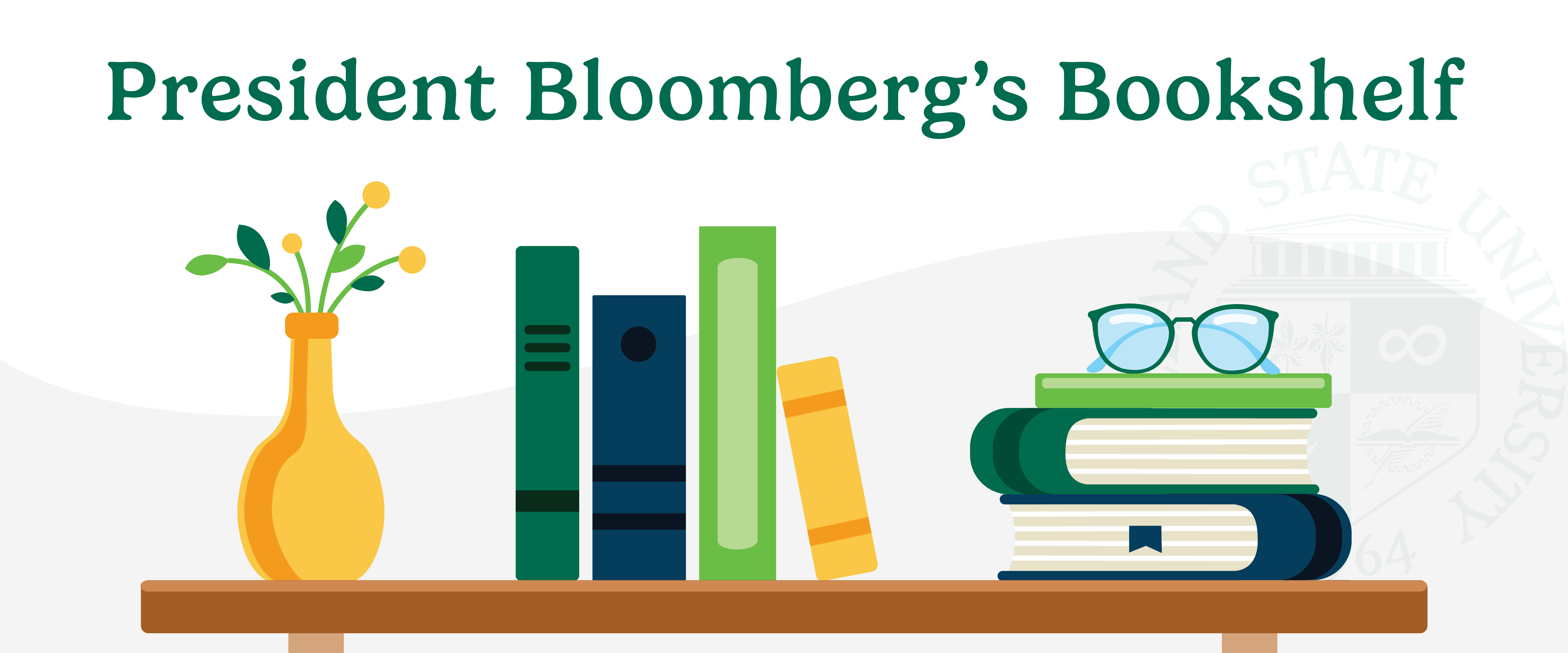
President Bloomberg shares her thoughts on some of her recently read books. Each month, she covers a new book, from insightful studies on higher education in America and current affairs to thought-provoking novels and collections of poetry.
This Month's BOOK
The Art Thief: A True Story of Love, Crime, and a Dangerous Obsession, Michael Finkel
 When I picked up The Art Thief by Michael Finkel, I was excited about the chance to sit down with a book that was a crime thriller, page-turner, and true story all wrapped up into one. The title really says it all. This is a story of “love, crime and a dangerous obsession,” and I found the story of art thief Stéphane Breitwieser and his accomplice girlfriend Anne-Catherine Kleinklaus captivating. As a pair, they case museums and art galleries, set their sights on masterpieces, and then execute nail-biting heists using little more than a Swiss Army knife.
When I picked up The Art Thief by Michael Finkel, I was excited about the chance to sit down with a book that was a crime thriller, page-turner, and true story all wrapped up into one. The title really says it all. This is a story of “love, crime and a dangerous obsession,” and I found the story of art thief Stéphane Breitwieser and his accomplice girlfriend Anne-Catherine Kleinklaus captivating. As a pair, they case museums and art galleries, set their sights on masterpieces, and then execute nail-biting heists using little more than a Swiss Army knife.
Finkel’s chapters that focus on the heists are exactly what I hoped for in a summer read, but it’s the chapters between the heists, as well as what comes after Breitwieser is finally arrested, that showed me something unexpected. These thieves stole a collection of art estimated at $2 billion, all kept neatly in the attic of Breitwieser’s mother’s house. According to Breitwieser himself, he never had plans to sell the art. He didn’t necessarily choose the most expense pieces. Instead, he and Kleinklaus picked the pieces that spoke to them. They decorated the attic to make it beautiful.
I had come to The Art Thief with preconceived notions that the thief was little more than greedy. Why else risk arrest and incarceration? But Breitwieser and Kleinklaus both aren’t “typical” thieves. They saw themselves are liberators of great pieces of art from their own prisons, and they professed to have plans to return the stolen art.
Finkel uses this captivating true crime story to examine the mind and the methods of some of the world’s most successful thieves. The story draws you in and grips you until the end, but the quiet moments in between the action allow you to reflect on what drives someone to so brazenly steal heavily guarded masterpieces and tuck them away in an attic. It’s a fascinating study of criminal behavior and the motive behind it. It is a great summertime read, and I highly recommend it.
PAST BOOKS
Not the End of the World: How We Can Be the First Generation to Build a Sustainable Planet, Hannah Ritchie
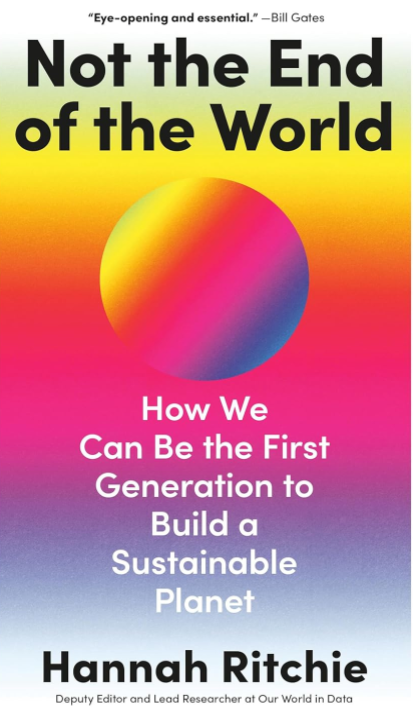 It’s not often that we’re told to worry a bit less about our planet’s sustainability, yet author Hannah Ritchie manages to explore a narrative about climate change that is radically hopeful. Her book, Not the End of the World, is the spring selection for our College of Arts and Sciences study circle, and it’s not hard to see why. Not the End of the World is a call to action to today’s scholars, activists and creative thinkers. Ritchie lays it out pretty simply:
It’s not often that we’re told to worry a bit less about our planet’s sustainability, yet author Hannah Ritchie manages to explore a narrative about climate change that is radically hopeful. Her book, Not the End of the World, is the spring selection for our College of Arts and Sciences study circle, and it’s not hard to see why. Not the End of the World is a call to action to today’s scholars, activists and creative thinkers. Ritchie lays it out pretty simply:
“If you are living today, you are in a truly unique position to achieve something that was unthinkable for our ancestors: to deliver a sustainable future. I believe that we can be the generation that meets the needs of everyone while leaving the environment in a better state than we found it. What makes us different from our ancestors is that economic and technological changes mean we have options.”
Ritchie, a senior researcher at the University of Oxford, has the data to back up her optimism. The book is filled with clear data and engaging anecdotes that encourage us to stress less about tackling every aspect of sustainability. For instance, Ritchie provides evidence to show that landfills may have a bad reputation, “but a well-managed landfill, deep in the ground, can be a very effective environmental solution.” Also, the idea that the planet doesn’t have enough space for all the landfills we need isn’t correct either. According to Richie, we likely need to use only 0.001% of our planet’s land area to house our landfills.
The author recommends that we focus our efforts and our concerns on the threats that have the highest potential for harm. The solutions to these issues aren’t easy fixes, but they’re within our reach. Ritchie makes the case that one of the largest threats to our ecosystems is the weakening of our ecosystems, which leads to irreparable plant or animal extinction. To strengthen our ecosystems, we need to promote and protect biodiversity. That does mean continuing the fight against deforestation and reducing (but not necessarily eliminating) the human consumption of meat. “Just as with every other problem, time is of the essence,” writes Ritchie. “Every time we delay, we risk losing another species forever.”
In a time when climate change is daily news and, as a result, a daily stressor, it’s refreshing to read that not everything is as bad as it seems. Some things certainly are bad, and these are where we need to focus our efforts. Ritchie’s hopeful message is an inspiring reminder that time hasn’t run out:
“What makes me most optimistic is the number of people I meet who are all pushing for this…Ignore those who say that we are doomed. We are not doomed. We can build a better future for everyone.”
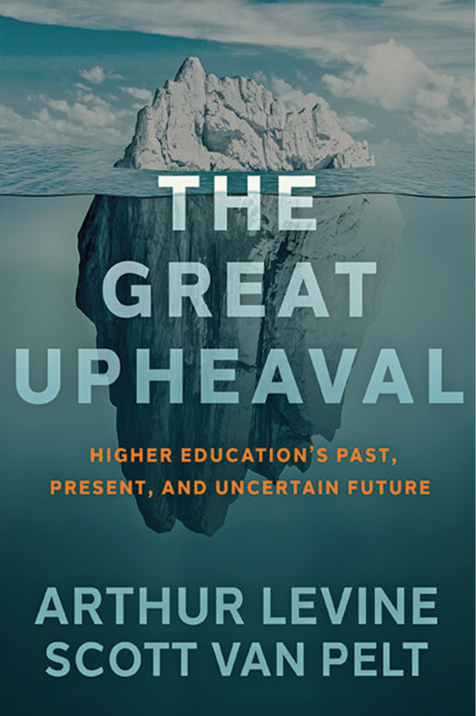 The Great Upheaval: Higher Education's Past, Present, and Uncertain Future, Arthur Levine and Scott Van Pelt
The Great Upheaval: Higher Education's Past, Present, and Uncertain Future, Arthur Levine and Scott Van Pelt
In The Great Upheaval, I came across the following quote: “One fact…is becoming more and more obvious every day. The American public is not satisfied with the present course of education… The great objection is that it is not sufficiently modern and comprehensive to meet the exigencies of the age and country in which we live.” This was taken from a report of the Amherst College faculty in 1826, yet it could easily be used today without changing a word.
The authors of The Great Upheaval, Arthur Levine and Scott Van Pelt, who are both in academia themselves, do an impressive job of drawing upon the history of higher education in the United States to examine what we are experiencing now, and the inevitable changes that will either be led by higher education or will happen unto us. Of course, Levine and Van Pelt aren’t the only authors or scholars to look in depth at colleges and universities to predict turbulence ahead. However, I found their approach to examining the evolution of higher education and drawing appropriate examples from other industries particularly insightful.
For instance, the business model of the film industry has changed drastically since the early twentieth century, with considerable and radical change occurring in just the past decade. Whereas a small group of large movie studios used to control all aspects of their business, now streaming platforms have risen to prominence by offering easy access to entertainment. Studios who chose to ignore this shift have seen tremendous declines in their business while others have adapted. As the authors note, “The struggle facing Hollywood today is that the industrial model no longer works. Disruptive change has come, offering new kinds of value that cannot be easily reconciled with the long-standing business model.”
So as higher education plans for a future that reflects changes to student demographics, technology and the economy, Levine and Van Pelt hone their research to offer advice that I find both compelling and challenging. First, they advise that we must recognize that we are in the education business first and foremost. While we do provide campus services, count credits, and confer degrees,, we are primarily about the very human process of creating opportunities to learn, discover and create new knowledge.
The authors also advise that as colleges and universities, we must articulate the distinctive qualities that distinguish us from our peers. What do we do better than any other college or university in our region? This can be a hard question to answer. As we continue our Organizational Resilience/Financial Stability work at CSU, this question will be a key element to address. I’m eager for us to work together to determine that distinctive advantage and then endeavor to do more of it or do it better than anyone else.
In finishing The Great Upheaval, I was reminded of the Noah Rule: “No more prizes for predicting rain; prizes only for building arcs.” Levine and Van Pelt provide excellent historic examples of challenges and change; it is up to us to apply these lessons as we chart where we’re headed.
Turning to One Another: Simple Conversations to Restore Hope to the Future, Margaret J. Wheatley
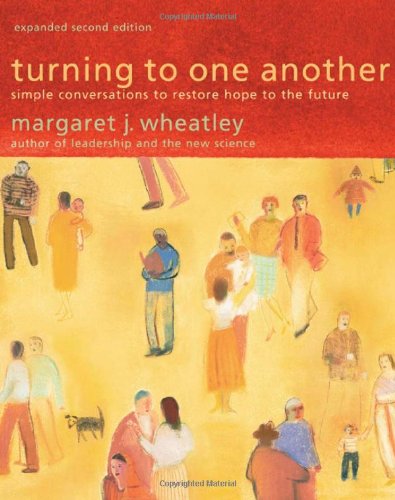 As we wrap up our fall semester and look toward the new calendar year, I am planning to read books during the holiday season that inspire me and nurture my soul. I hope you all make time to do the same!
As we wrap up our fall semester and look toward the new calendar year, I am planning to read books during the holiday season that inspire me and nurture my soul. I hope you all make time to do the same!
One of my old favorites that I plan to pick up again in the coming days is a decidedly non-academic book by Dr. Margaret Wheatley. Wheatley has written some thick, scholarly works, including Leadership and the New Science, in which she applies the lessons of chaos theory and quantum mechanics to relationship building and management. She wrote this book, Turning to One Another: Simple Conversations to Restore Hope to the Future, based on a simple belief she has shared often in her public talks: "I believe we can change the world if we start talking to one another again."
For those interested in reading this book, it’s a quick read which you can get through likely in a day. Rather than provide an overview to you here, I’ll instead share with you Wheatley’s poem, which inspired both the title of her book and the overall message.
There is no power greater than a community discovering what it cares about.
Ask “What’s possible?” not “What’s wrong?” Keep asking.
Notice what you care about.
Assume that many others share your dreams.
Be brave enough to start a conversation that matters.
Talk to people you know.
Talk to people you don’t know.
Talk to people you never talk to.
Be intrigued by the differences you hear.
Expect to be surprised.
Treasure curiosity more than certainty.
Invite in everybody who cares to work on what’s
possible. Acknowledge that everyone is an expert
about something. Know that creative solutions come
from new connections.
Remember, you don’t fear people whose story you
know. Real listening always brings people closer
together.
Trust that meaningful conversations can change your world.
Rely on human goodness. Stay together.
—Margaret Wheatley, “Turning to One Another,” 2002
Happy holidays, everyone. In the days ahead, I hope you have a conversation with someone that surprises, delights and inspires you.See you in the new year.
Strength to Love, Martin Luther King, Jr.
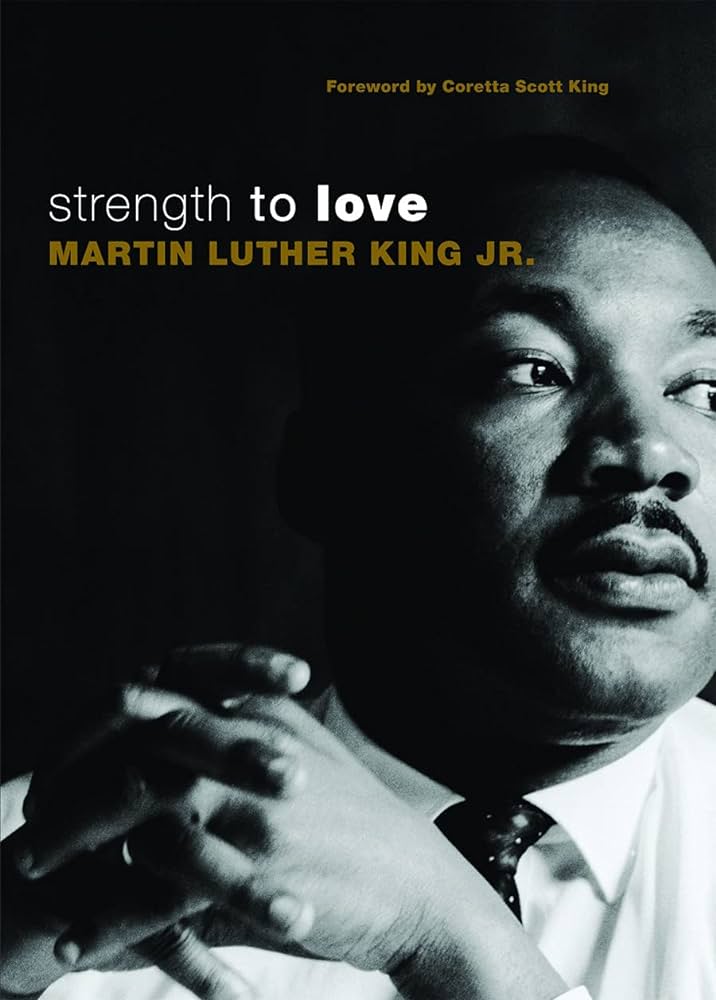 Ever since I saw the The Mountaintop, a fictionalized play depicting Dr. Martin Luther King Jr.’s last day on Earth, I’ve been seeking to understand more about the complexity of the Reverend. We recognize him every January with a day of remembrance, and I presume that most of us could quote from Dr. King’s “I Have a Dream” speech or perhaps even from “Our God is Marching On.” However, my eagerness stemmed from wanting to better understand the person beyond more than his most popular remarks.
Ever since I saw the The Mountaintop, a fictionalized play depicting Dr. Martin Luther King Jr.’s last day on Earth, I’ve been seeking to understand more about the complexity of the Reverend. We recognize him every January with a day of remembrance, and I presume that most of us could quote from Dr. King’s “I Have a Dream” speech or perhaps even from “Our God is Marching On.” However, my eagerness stemmed from wanting to better understand the person beyond more than his most popular remarks.
Dr. King is a man we have elevated to the status of icon, yet he was altogether human. While he did become an internationally recognized civil rights leaders and recipient of the Nobel Peace Prize, he was also the pastor of a Black Baptist church, preaching to a congregation of folks who were just trying to live their lives and raise their children in the segregated southern United States during a time of substantial racial unrest. The Reverend was brilliant, revolutionary, peace-loving and imperfect — and it’s that complication of Dr. King the human being that I believe draws us to his teachings.
Recently, I’ve been reading a collection of King’s sermons, Strength to Love. It was initially published in 1963 and was perhaps the first time that white audiences received King’s words and ideas. Interestingly, King himself was reticent to share his words in writing, fearing they would lack power if not spoken aloud. In the book’s preface, he is honest to say “…even as this volume goes to press, I have not altogether overcome my misgivings…I offer these discourses in the hope that a message may come to life for readers of these printed words.”
Despite his hesitation, Strength to Love has remained a powerful collection of messages and life lessons. While the sermons are rooted in biblical New Testament teachings and pertain to “the present crisis” of the late 50s and early 60s, from my perspective these words transcend Christianity and the times in which they were written. I was moved by King’s fundamental beliefs in the moral imperative of peace and love that served as a common denominator in his non-violent civil rights work, his worker rights advocacy and his geopolitical beliefs that ultimately led him to oppose the Vietnam War.
In seeking to learn more about the complex nature of the man, Strength to Love provided me with compelling food for thought. I often think of King as a courageous leader who spoke against his oppressors boldly, yet he shares his own emotional struggles in his sermon “Antidotes for Fear”: “In these days of catastrophic change and calamitous uncertainty, is there any man who does not experience the depression and bewilderment of crippling fear, which, like a nagging hound of hell, pursues our every footstep?”
In the collection’s first sermon, King himself addresses the paradox we must embody if we are to rise above hatred: “There is little hope for us until we become tough minded enough to break loose from the shackles of prejudice, half-truths, and downright ignorance…But we must not stop with the cultivation of a tough mind. Tough mindedness without tenderheartedness is cold and detached, leaving one’s life in a perpetual winter devoid of the warmth of springs and the gentle heat of summer.”
Dr. King’s words continue to serve as a call to action for all of us, regardless of our personal backgrounds, and his honesty about his own indecisions and fear can provide comfort to all of us when we are feeling less than perfect.
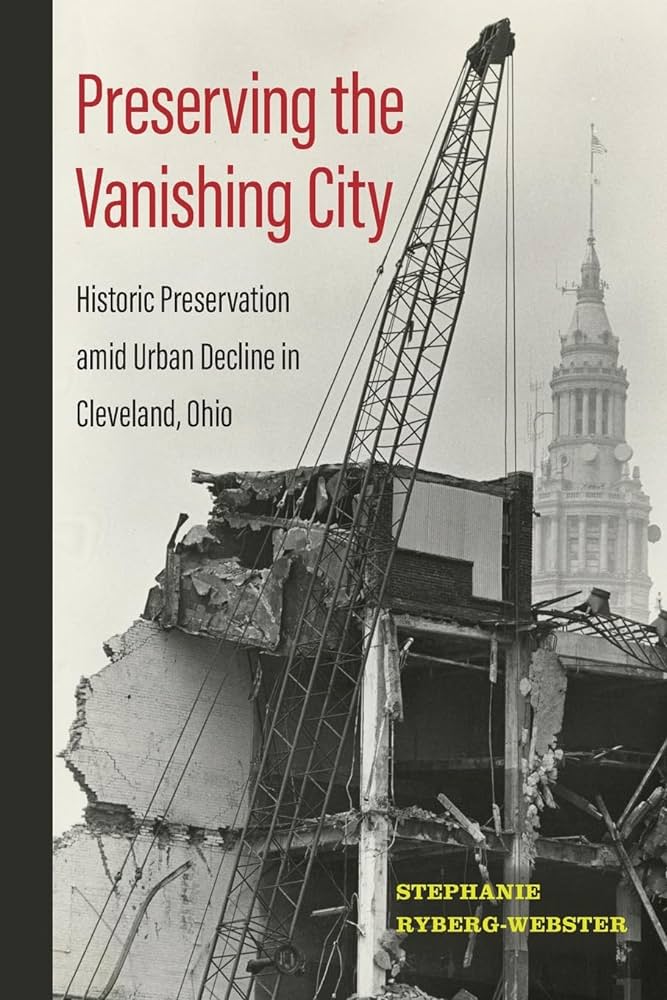 Preserving the Vanishing City: Historic Preservation amid Urban Decline in Cleveland, Ohio, Stephanie Ryberg-Webster
Preserving the Vanishing City: Historic Preservation amid Urban Decline in Cleveland, Ohio, Stephanie Ryberg-Webster
As someone who was not born and raised in Ohio, it’s a fairly common occurrence for me to be in a building or neighborhood in Cleveland and wonder about the history of the place. I have done some of my own amateur research on the topic. (In fact, I have the Cleveland Historical app on my phone!) I often look up photos of buildings downtown from over a century ago and learn about the preservation initiatives that kept these landmarks a part of Cleveland’s identity. To my delight, Stephanie Ryberg-Webster, professor in our Levin College of Public Affairs and Education, also has an interest in these topics. Her fascinating book on the topic, published just this year, is Preserving the Vanishing City: Historic Preservation amid Urban Decline in Cleveland, Ohio and examines Cleveland’s rapidly declining population in the 1970s and 1980s and the efforts made to preserve key areas of the city.
Professor Ryberg-Webster provides the historic context for the housing boom around the start of the twentieth century, writing about the neighborhoods developed at that time, which unfortunately were built cheaply, lacking necessities like proper insulation, and often falling apart after only a few Ohio winters. In the decades that follow, Cleveland became home to more and more homes and buildings in disrepair, many of which were subsequently abandoned or razed.
However, the preservationist movement that arises by the 1980s is led by an inspiring group with perseverance in spades. Key among them, Maxine Goodman Levin, for whom our School of Urban Affairs is named, was instrumental in convincing city officials that the city’s older buildings had value, both personal and cultural. As the book reports, an editorial published in The Plain Dealer lauded Levin’s efforts: “Mrs. Levin has conducted her own campaign to save the Mechanics Block with such vigor that city officials and other civic leaders have had to think about the problem in spite of their own disinclination to worry about anything as unimportant as ‘an old building.’”
Preservationist heroes like Levin emerge throughout the book, coming up with creative ideas to retain and re-use neighborhoods. In 1977, the Warehouse District becomes a new housing area for the city. In 1978, a portion of the Gordon Square Arcade crashes onto the sidewalk, yet one organization battles against numerous setbacks to restore the building. As I finished the book, it was the frequent struggle these preservationists faced — and their courage to continue despite resistance — that stuck with me the most. As Professor Ryberg-Webster states, “For preservationists, swimming against the tide of decline takes stamina and endurance…Preservationists in legacy cities need to have a deep commitment to their work and patience in making progress.”
As preservation continues in Cleveland today with projects like the African American Civil Rights Trail, I see the city of Cleveland not only with newfound context but also with deepened admiration. Portions of this city are still here thanks to the efforts of individuals who strongly believe that a city’s history is a significant part of its character.
Letter to My Daughter, Maya Angelou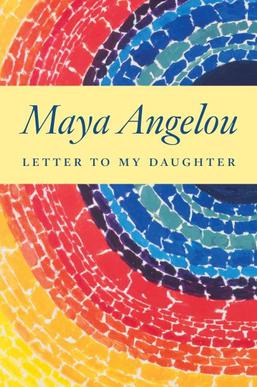
I find the very concept of Maya Angelou’s Letter to My Daughter inspiring and a bit heart wrenching. Her collection of essays depicts personal life lessons, many she learned through hardship, loss and sometimes sheer embarrassment. Angelou herself had no daughter of her own, but full of the lessons that she wished she had known as a young woman, she wrote this book directly to her readers: “I gave birth to one child, a son, but I have thousands of daughters. You are Black and White, Jewish and Muslim, Asian, Spanish-speaking, Native American and Aleut. You are fat and thin and pretty and plain, gay and straight, educated and unlettered, and I am speaking to you all. Here is my offering to you.”
The book contains 28 “lessons” in total, and when reading Letter to My Daughter, it’s hard not to feel like you are sitting in a room with the author, listening to her read her words aloud to you. I sometimes think of these lessons as I am grappling with challenges in my own life. For instance, as I have lost family members, friends, colleagues and mentors, I think on Angelou’s essay regarding Coretta Scott King, her dear friend and wife of Martin Luther King, Jr. After Coretta passed away, Angelou found herself “besieged with painful awe at the vacuum left by the dead.” Angelou doesn’t provide answers about death exactly, but she gives a glimpse into her own thinking about grief and the thoughts that bring her comfort: “When I find myself filling with rage over the loss of a beloved, I try as soon as possible to remember that my concerns and questions should be focused on what I learned or what I have yet to learn from my departed love. What legacy was left which can help me in the art of living a good life?”
During a memorial service after Angelou passed away in 2014, her son shared that she had experienced chronic pain for the last 10 years of her life due to failing health. That insight lends a bittersweetness to Letter to My Daughter, which she wrote in 2009. I imagine that Angelou must have felt a sense of urgency to share these lessons with her daughters all over the world before there was no time left. Angelou, of course, had to follow her own advice: “Be certain that you do not die without having done something wonderful for humanity.”
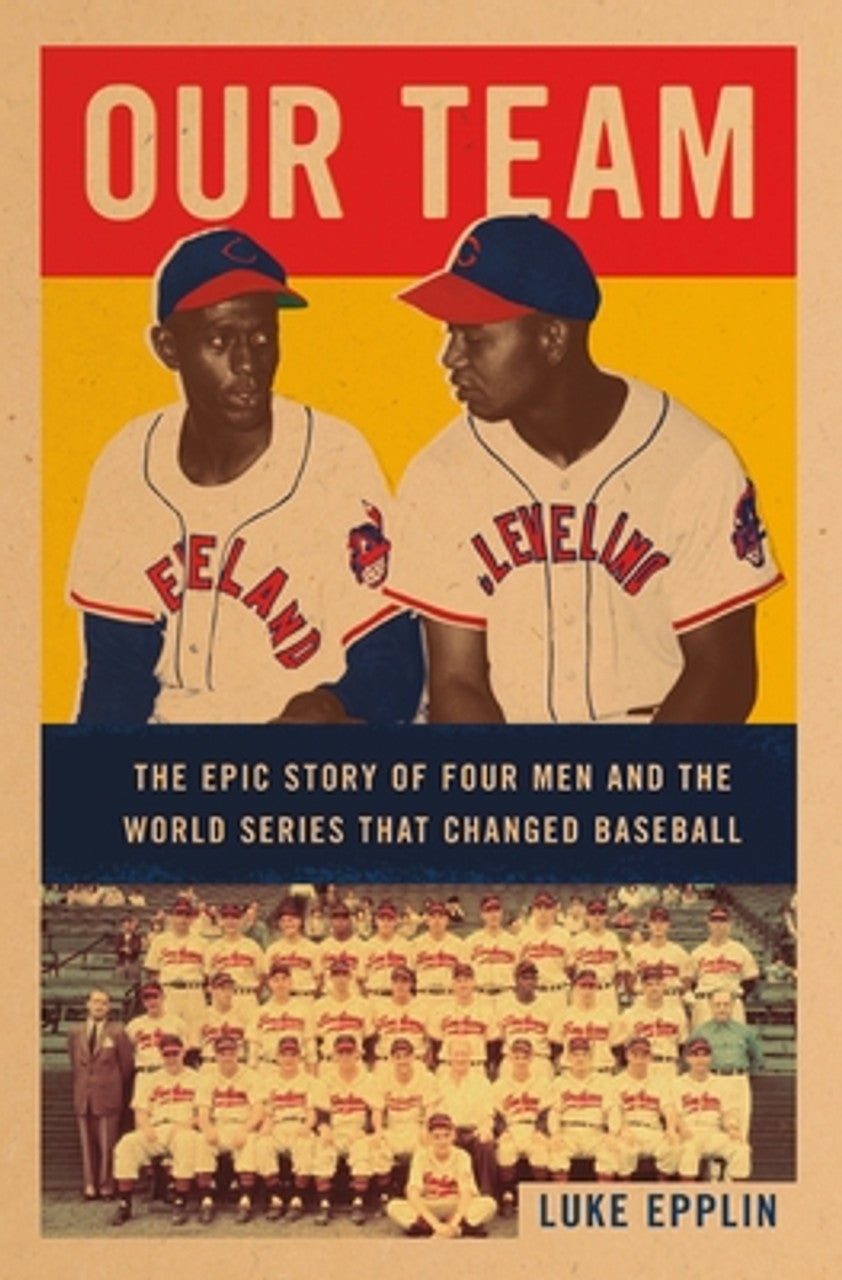 Our Team: The Epic Story of Four Men and the World Series That Changed Baseball, Luke Epplin
Our Team: The Epic Story of Four Men and the World Series That Changed Baseball, Luke Epplin
In 1947, Jackie Robinson made history when he broke the color barrier as first baseman for the Brooklyn Dodgers. It’s less well known today, however, that the then-named Cleveland Indians also broke the color barrier only a few months later. As author Luke Epplin writes in Our Team: The Epic Story of the Four Men and The World Series that Changed Baseball, “…there was another meaningful and dramatic narrative unfolding at the same time in Cleveland, where the hometown Indians would whip fans across Northern Ohio into a state of delirium during the summer of 1948, the season after the franchise had desegregated its roster. This is the story of how that team came to be.”
Epplin’s book details perhaps the most incredible season for Cleveland baseball. During the team’s 1948 season — the first integrated season for the team — the Indians won the World Series against the Boston Braves (which is also the last time Cleveland won the title). Our Team is an engaging history lesson of Cleveland, the city’s sports scene and the emerging civil rights revolution in the years leading up to, through and following World War II.
The eponymous four men include MLB all-star player Bob Feller and Negro League all-stars Larry Doby and Satchel Paige, who met during barnstorming games between their two leagues. It was owner Bill Veeck who brought these three players together, united under the banner of Cleveland baseball in 1948. These men helped to change the face of American baseball while becoming World Series champions. In fact, Larry Doby became the first Black player to hit a home run in a World Series game during this season.
More than anything else, I found Our Team to be a story of optimism. While Bill Veeck was recruiting Black players to an otherwise white team, other owners wanted to keep the game segregated. When Larry Doby and Satchel Paige walked onto the field for the first time, few would have thought that Cleveland could stare down adversity and become the top team in the league at the same time.I am an eternal optimist when it comes to baseball. As of the day I am writing this, the Cleveland Guardians are 5.5 games out of first place in the American League Central and 9.5 games back from the last Wild Card slot. While it doesn’t look good right now, you never know when Cleveland’s next run for the World Series will be just around the corner…
Demon Copperhead, Barbara Kingsolver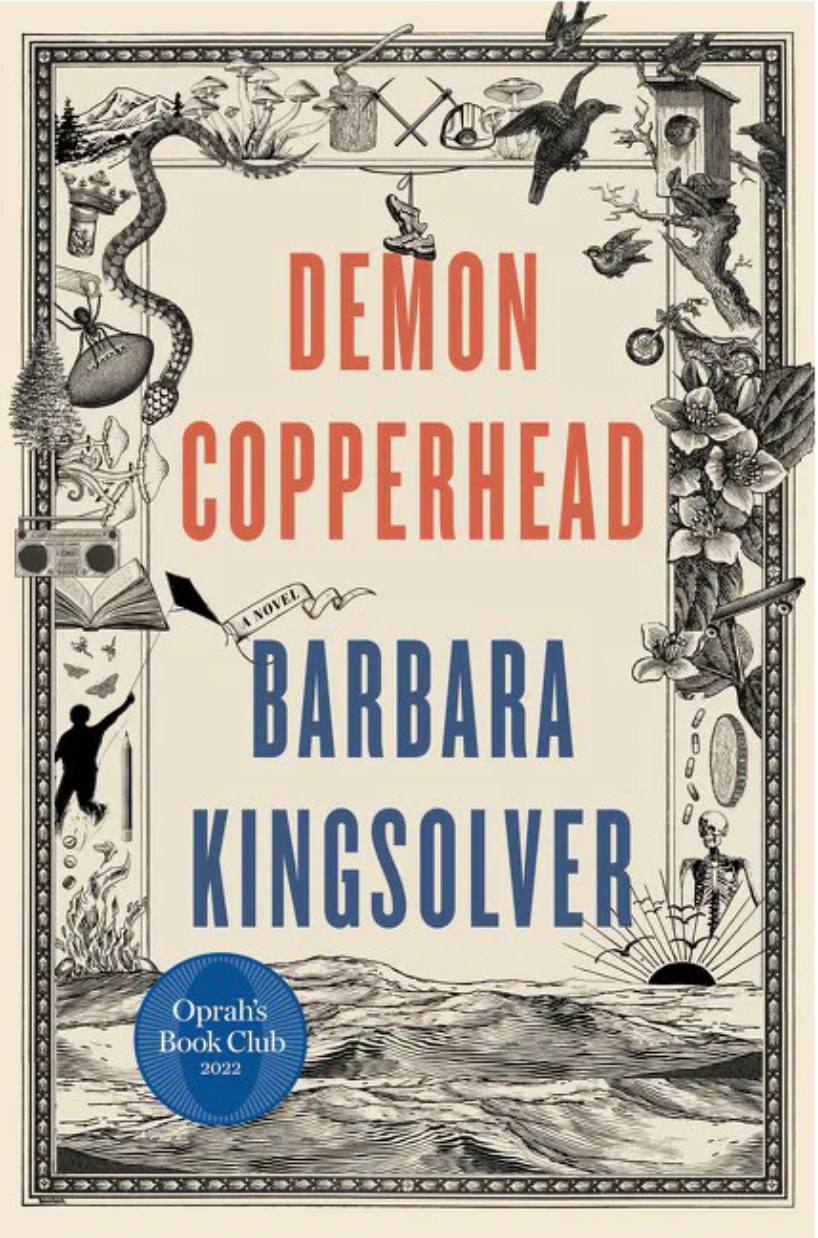
When author Barbara Kingsolver was debating how to craft her novel about the opioid epidemic in southern Appalachia, she happened to be vacationing in the U.K. and staying in exactly the right place: Bleak House, the former residence of Charles Dickens. Not only did Kingsolver gain the inspiration to structure her novel with first-person narration like Dickens’ David Copperfield, but she also had the opportunity to begin her first draft at the very desk where Dickens wrote Copperfield.
The result is Demon Copperhead, a touching and sweeping story narrated by the titular character, much like the Dickens novel. In Demon Copperhead, Kingsolver tells the story of a young boy whose home life is unpredictable and chaotic as the result of generational poverty and the national opioid crisis. We see from Demon’s perspective the experience of moving through an American foster care system that seems to fail him time and again. It really isn’t surprising when our narrator himself struggles with addiction as an adolescent.
I’ll admit, this isn’t the light, beachy read you may be looking for this summer. Demon traverses an extraordinarily tragic journey from childhood to adulthood, and although his life experience is fictional, many details are based on the stories of the children most impacted by poverty and the opioid crisis in America. Kingsolver, channeling the spirit of Dickens as she guides readers through this story, shows that fictional narrative is a powerful tool for bringing the ugly truths of society into the harsh light of day. I was drawn into the novel and found myself unable to turn away.
Despite the tragic nature of the book, there is also hope—and wry humor. While Demon Copperhead is a story about struggle and loss, it is also a story of love and forgiveness, generosity and kindness. Much like Dickens’ work, this book is filled with simple but insightful observations. I found this quote from young Demon to be especially touching and one we would all do well to remember when facing our own challenges: “I got up every day thinking the sun was out there shining, and it could just as well shine on me as any other human person.”
Scare Your Soul: 7 Powerful Principles to Harness Fear and Lead Your Most Courageous Life, Scott Simon
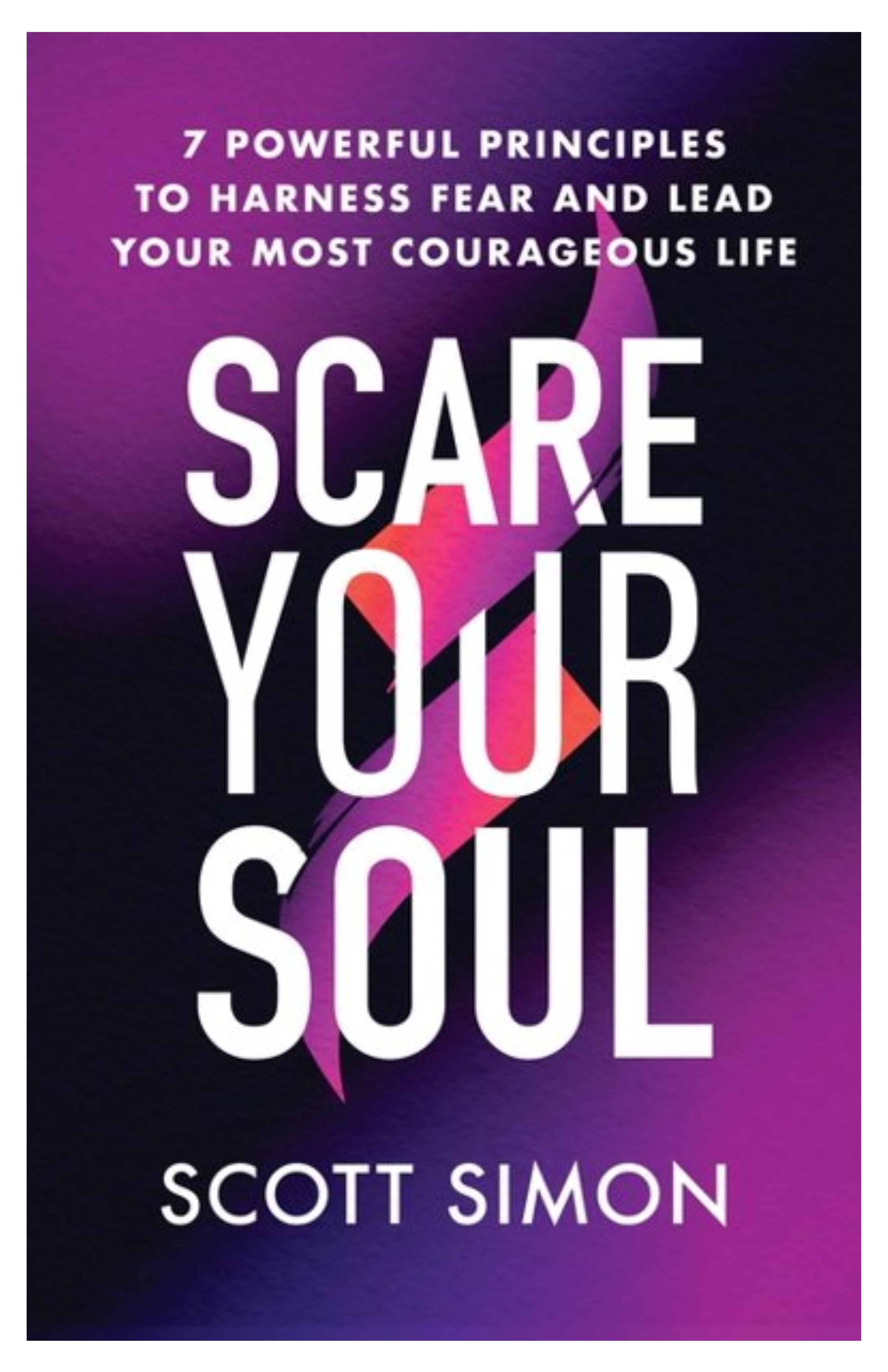 Scare Your Soul is a lot like its author: warm, funny and relatable. I had the good fortune of meeting and getting to know the author of this book, Scott Simon, over this past year as we both participated in the Leadership Cleveland program. When I initially learned about this book he had written, however, I was not enthusiastic about reading it. I tend to shy away from publications built around lists (e.g., “10 strategies to...”, “5 tips for...”, “8 habits of...”). Worse yet, parts of Simon’s book is written in “workbook” format with questions to answer and assignments to complete. This didn’t sound to me like reading for fun. I had promised Scott I’d read it, though, so I picked it up and was surprised by how quickly I was drawn in by his humility, humor and gift for storytelling.
Scare Your Soul is a lot like its author: warm, funny and relatable. I had the good fortune of meeting and getting to know the author of this book, Scott Simon, over this past year as we both participated in the Leadership Cleveland program. When I initially learned about this book he had written, however, I was not enthusiastic about reading it. I tend to shy away from publications built around lists (e.g., “10 strategies to...”, “5 tips for...”, “8 habits of...”). Worse yet, parts of Simon’s book is written in “workbook” format with questions to answer and assignments to complete. This didn’t sound to me like reading for fun. I had promised Scott I’d read it, though, so I picked it up and was surprised by how quickly I was drawn in by his humility, humor and gift for storytelling.
Simon encourages us to embrace our mistakes — and he starts by sharing a few honest (and sometimes embarrassing) mistakes of his own. He reminds readers that people mess up every day, but sometimes it feels like our own mistakes are unforgivable, either in our professional or our personal lives. Simon goes on to explore the underlying fear of failure that is so common in our western culture and how this fear often prevents us from reaching beyond our comfort zone, pursuing a dream or being creative. He encourages us to think about why we don’t want to experience the mistakes and missteps that are a natural part of learning.
The real-world stories and lessons in Scare Your Soul are ones that I find myself reflecting on again and again. Simon offers insight into becoming a more adventurous and innovative person — someone willing to make mistakes, try new things and ask for support when we need it. This may be particularly helpful for people in professions where it is far too easy to fall into the trap of expecting go-it-alone perfection in ourselves even as we encourage exploration and experimentation in others.
At its core, Scare Your Soul carries a message of personal growth, forgiveness and appreciation for what we are capable of doing when we give ourselves permission to be curious and try something new, even if we make a few mistakes along the way.
A Psalm for the Wild-Built, Becky Chambers
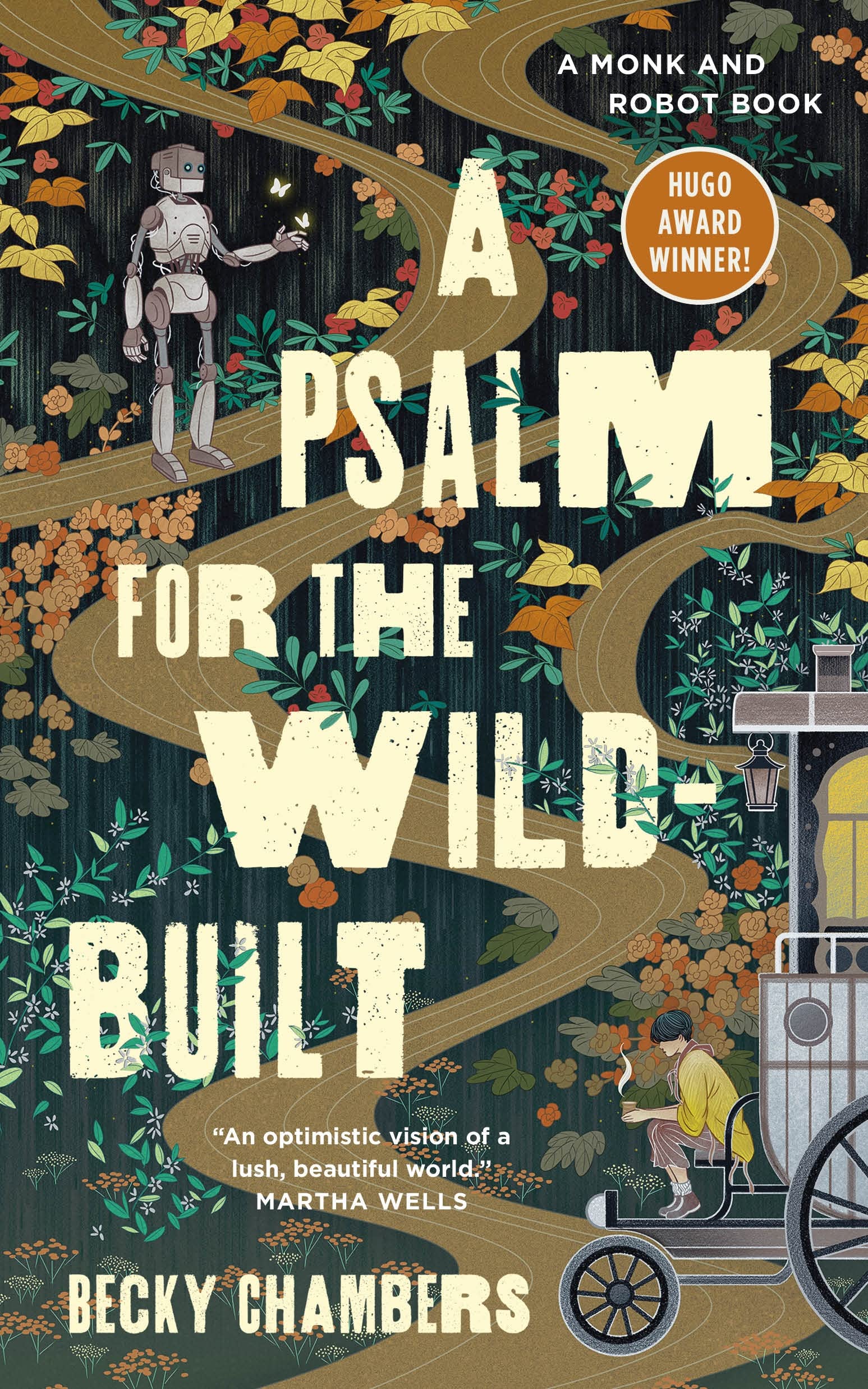
Although I am not typically a reader of science fiction, I recently enjoyed A Psalm for the Wild-Built, the first book in the “Monk & Robot” series by Becky Chambers. The book was selected as part of CSU’s College of Arts and Sciences’ study circle. It was a joy to read it along with faculty in the College and join in their discussions of it, as led by Dr. Jeff Karem, chair of English, and Dr. Kevin Mueller from Biological, Geological and Environmental Sciences.
If, like me, you find a summary of the novel’s plot a bit bewildering, I encourage you to dig into the first chapter at least in order to experience this unique world. The protagonist is a tea-making monk living on a moon where robots once lived but are long gone. When the monk explores the moon’s wilderness and encounters one of these robots, the two engage in surprisingly philosophical conversations about humanity’s creation of and growing reliance on AI. The storytelling is powerful and offers much food for thought. This quote from the book in particular has stuck with me — “We don’t have to fall into the same category to be of equal value.”
Having finished A Psalm for the Wild-Built, I now wonder why I don’t read more science fiction. I’ve been missing out! This book is fun, beautiful, relaxing and thought provoking. I plan to read more of Becky Chambers' work over the summer, and I encourage you to do the same. I leave you with another of my favorite passages from the book:
“Do you not find consciousness alone to be the most exhilarating thing? Here we are, in this incomprehensibly large universe, on this one tiny moon around this one incidental planet, and in all the time this entire scenario has existed, every component has been recycled over and over and over again into infinitely incredible configurations, and sometimes, those configurations are special enough to be able to see the world around them. You and I—we’re just atoms that arranged themselves the right way, and we can understand that about ourselves. Is that not amazing?”

